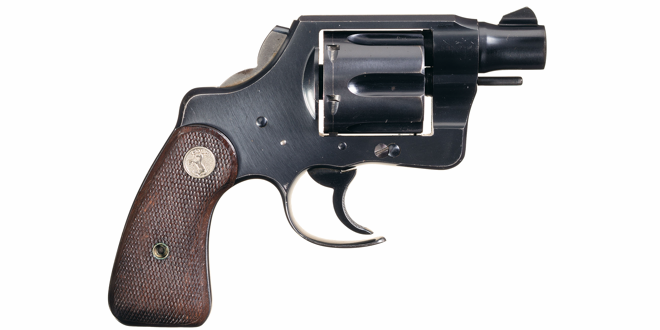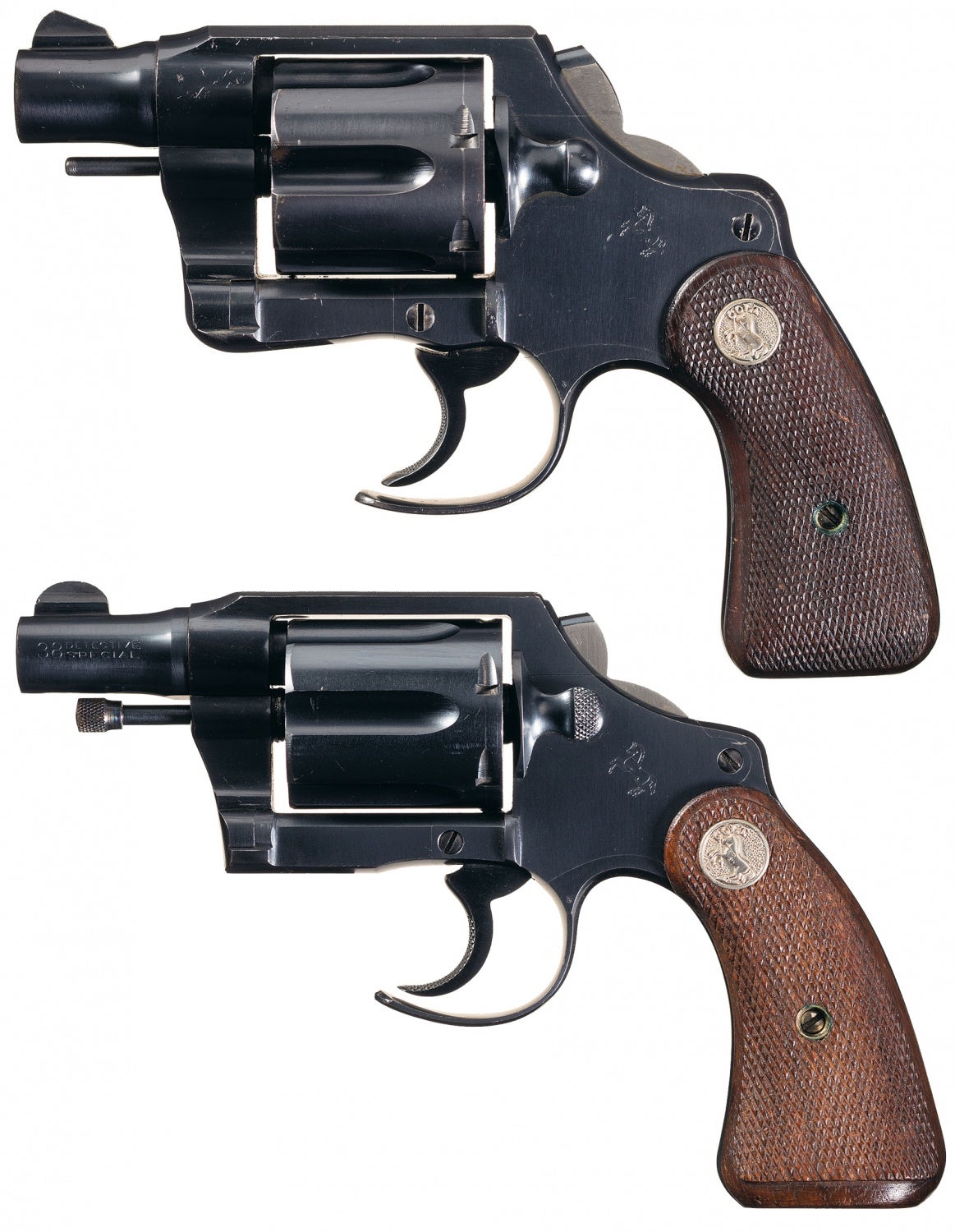Today’s installment of TFB’s Concealed Carry Corner series is a historical one telling about one of the most interesting early attempts of adapting a full-size handgun for concealed carry use. Particularly, in this article, we’ll take a look at the history of modified Colt revolvers known as Fitz Special.
John Henry FitzGerald was a police officer, sharpshooter and firearms enthusiast in general. The passion for guns and shooting is what brought him to the firearms industry. In 1918, he was hired by Colt and worked for the company until 1941. Despite many other contributions to the development of firearms and shooting sport, FitzGerald is mostly known today for his very unique way of modifying Colt revolvers for a pocket carry use. These revolvers ultimately became known as Fitz Special Colts.
The key descriptive features of Fitz Special revolvers are the shortened barrel (cut to two inches) with the reattached front sight, shortened ejector rod, bobbed hammer, rounded butt and most notably the missing front portion of the trigger guard. The host handguns for these conversions were mainly the Colt New Service and Colt Police Positive Special revolvers. The Fitz Special revolvers can be described as predecessors of later production model Colt snub nose revolvers.
I think the historical significance of Fitz Specials in terms of concealed carry firearms development is mainly in successfully combining three important concealed defensive handgun features. Let me break it down:
- Size. The small size is probably the first feature that comes to mind when you think about a concealed carry handgun. John Fitzgerald made his custom Colts compact in the most simple way – by cutting the barrels to 2″ length. Sometimes you can also see rounded grip butts on these revolvers. Although the host revolvers were mainly full-size duty models and even with chopped down barrels they won’t be considered compact by today’s standards, they are still relatively easily concealable firearms.
- Power. While compactness is good, you still have to pack some punch to have a decent terminal effect. The power/caliber of the cartridge is especially important to compensate for the short barrel which results in low muzzle velocities. This problem is well addressed in Fitz Special Colts because they are based on large/full-size revolvers which were chambered in the most powerful cartridges of the time like the .45 Colt.
- Speed. Back in the day, people already realized that in a gunfight you have to be fast if you want to win the fight. In fact, this was observed much earlier. Prominent Old West gunfighters such as Wild Bill Hickok were known to be successful thanks to the speed they could pull that wheel gun at, cock it and send some lead towards the rival. When it comes to concealed carry firearm, you have to be able to pull it out of your holster or pocket without worrying about the gun snagging on your clothes. In the case of revolvers, the part that is most prone to hook on everything on its way is, of course, the hammer spur. And that’s why Fitz Special revolvers have bobbed hammers which convert them to double action only revolvers regardless of the fact that the action is still capable of single action fire. I bet you’ll have a hard time cocking the bobbed hammer for a single action shot. Technically, you can do it by slightly pulling the trigger then grabbing and cocking the hammer, but these revolvers were meant to be used primarily as DAO guns. Besides the snag free construction, the ergonomics and design of the concealed carry defensive weapon must allow you to fire it as fast as possible after unholstering. And to achieve this, John Fitzgerald incorporated a modification which by today’s understanding of firearms safety will be considered a recipe for a disaster – the cut trigger guard. The idea behind this modification is that you won’t need to think about placing your finger inside the trigger guard under the stress of the gunfight when each millisecond matters. With the Fitz Special trigger guard, your index finger will naturally find the trigger in the fastest possible way. It was also considered to be a useful feature when shooting with gloved hands. Because these revolvers were basically converted to double action only, FitzGerald probably considered that the heavy double action trigger wouldn’t be accidentally pulled without deliberately applying pressure to it. Obviously, this is not the safest solution, but those were different times.
It is unknown how many Fitz Special revolvers were made at Colt by John FitzGerald: some sources say no more than 40, others say up to 200. Some prominent historical persons like Colonels Charles Askins and Rex Applegate were known for carrying Fitz Special revolvers. Today it is quite hard to identify a genuine Fitz Special especially considering that there were many replicas made. In the below-embedded video, Ian McCollum of Forgotten Weapons tells about the Fitz Special revolvers on an example of one of those replicas.
Lastly, here is another video where Philip Schreier, Senior Curator of NRA Museums, talks about the Fitz Special revolvers.
What other interesting facts about the Fitz Special revolvers and John Henry FitzGerald do you know?
Images courtesy of Morphy Auctions and Rock Island Auction Company
TFB’s Concealed Carry Corner is brought to you by GLOCK

 Your Privacy Choices
Your Privacy Choices


